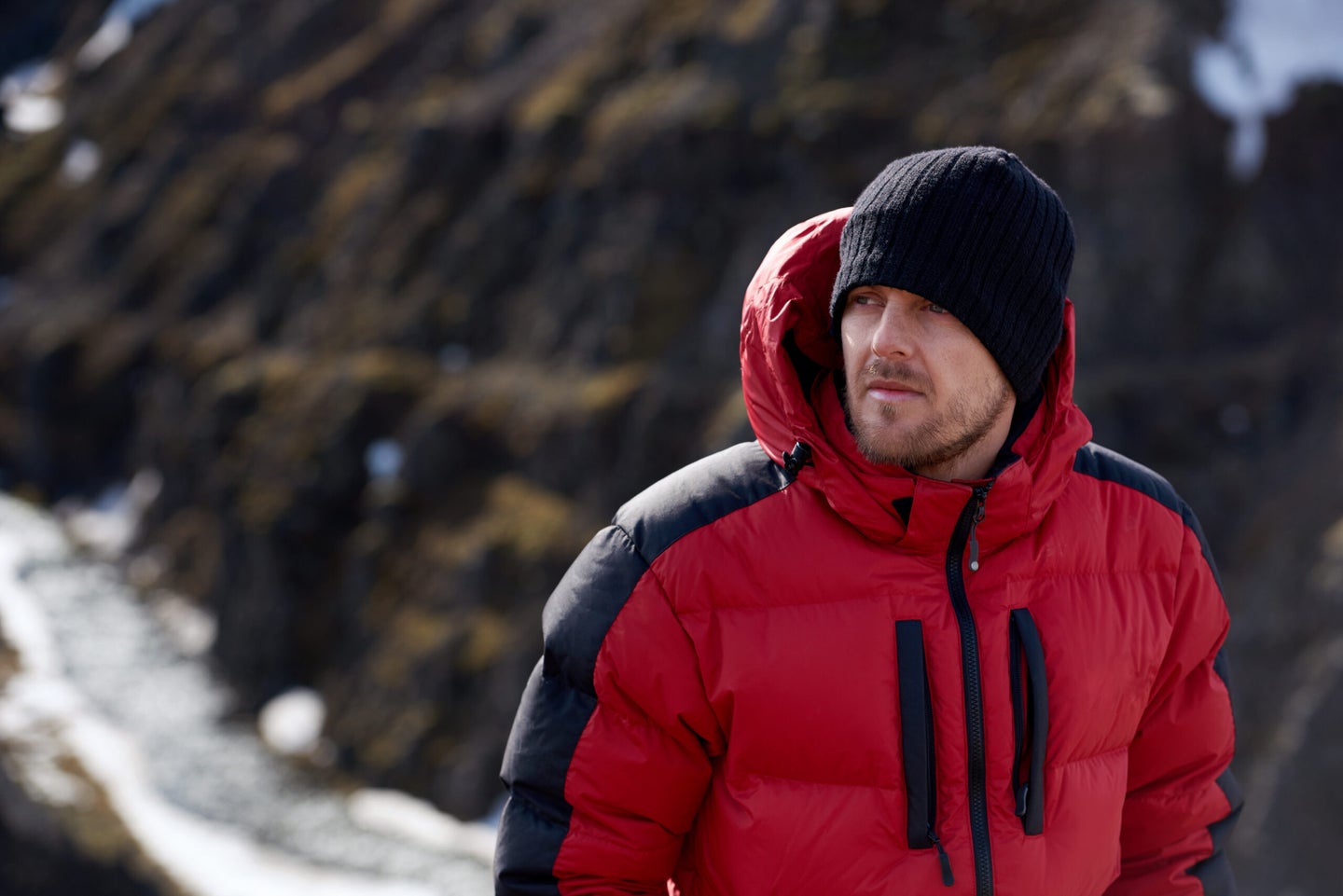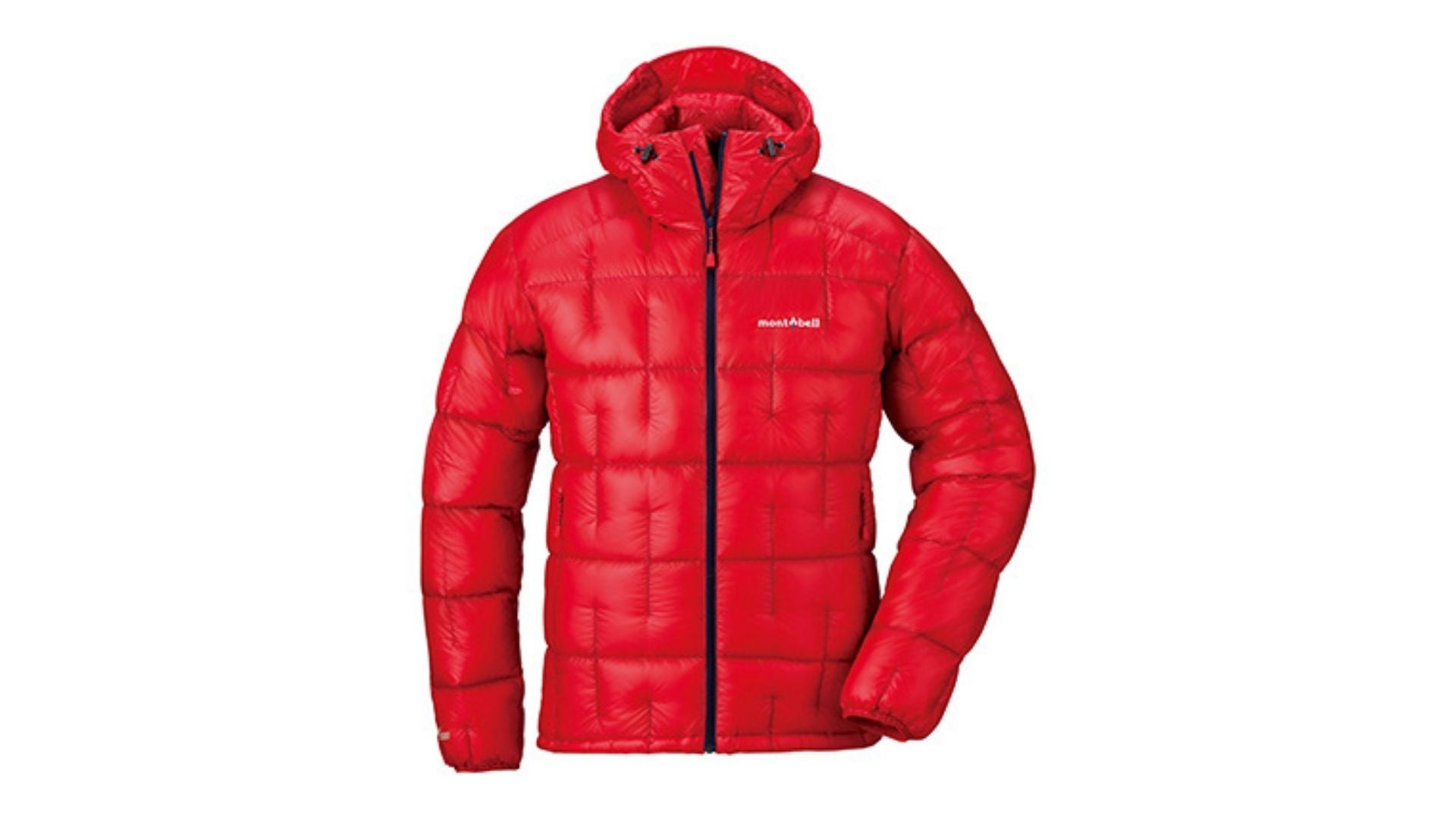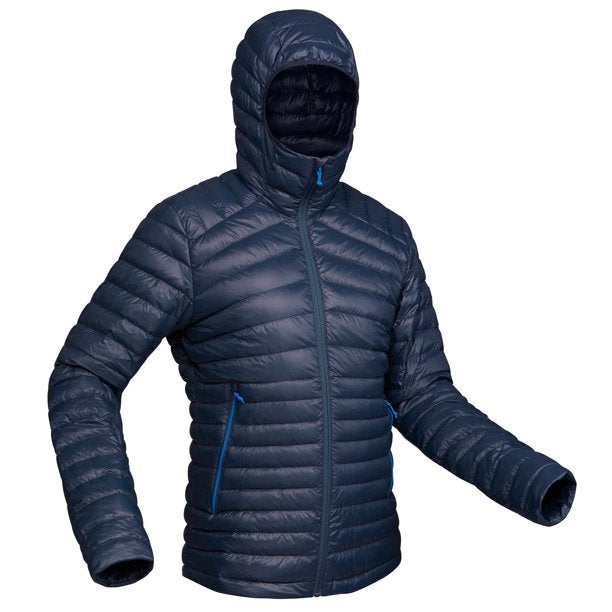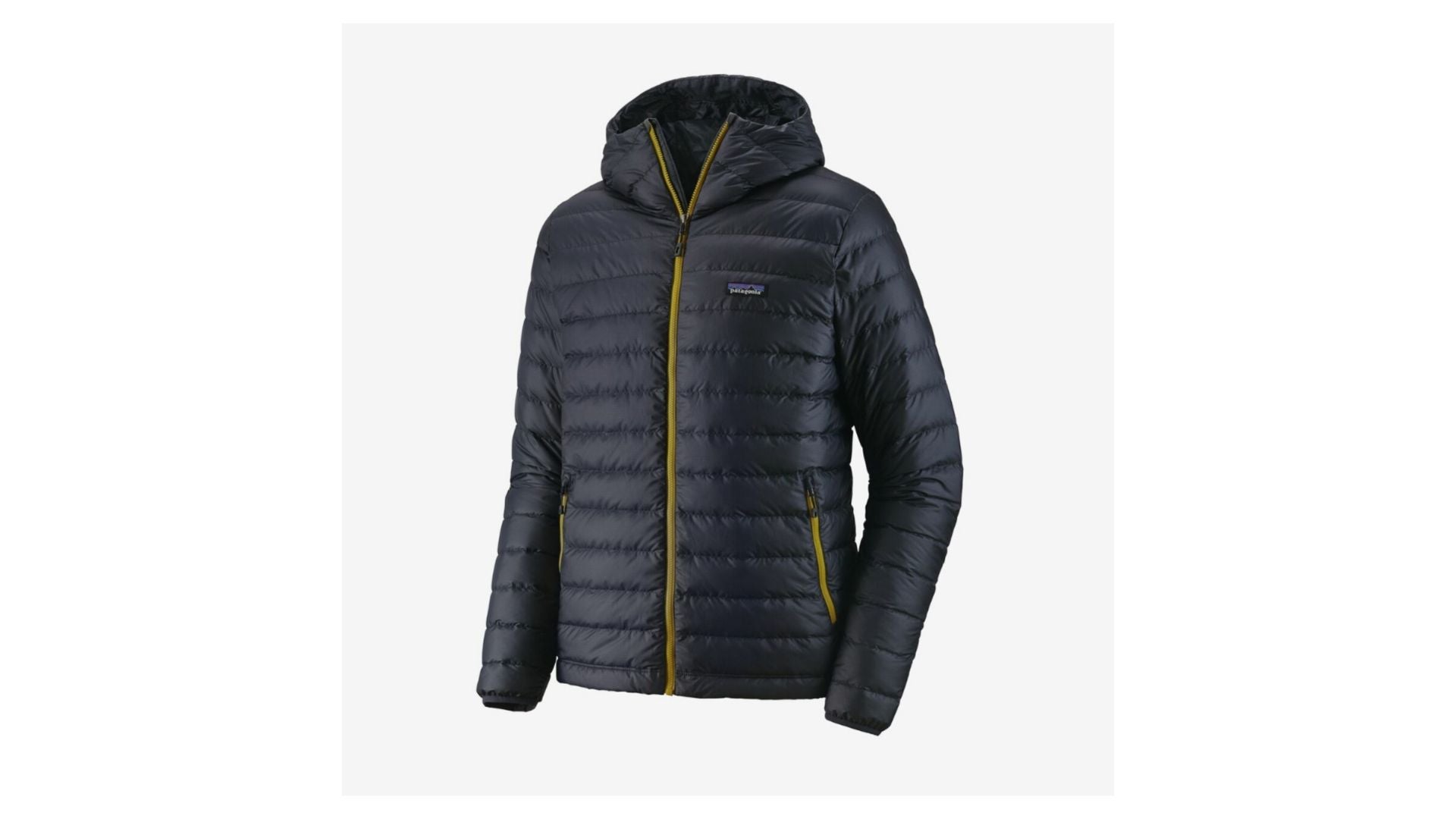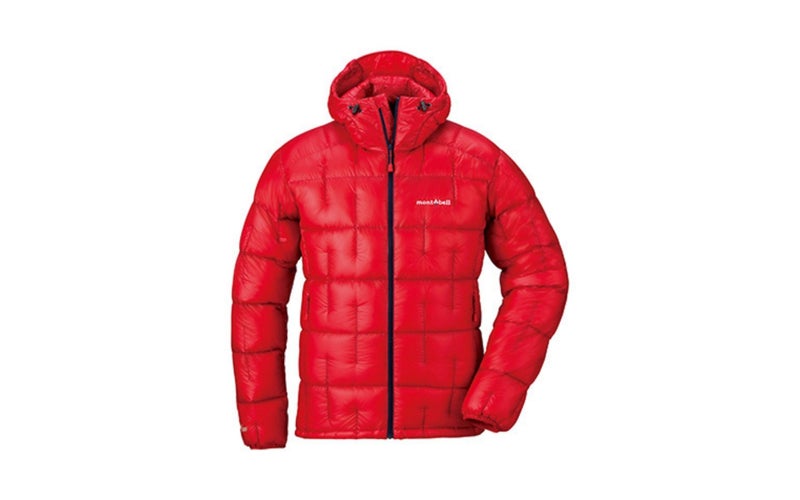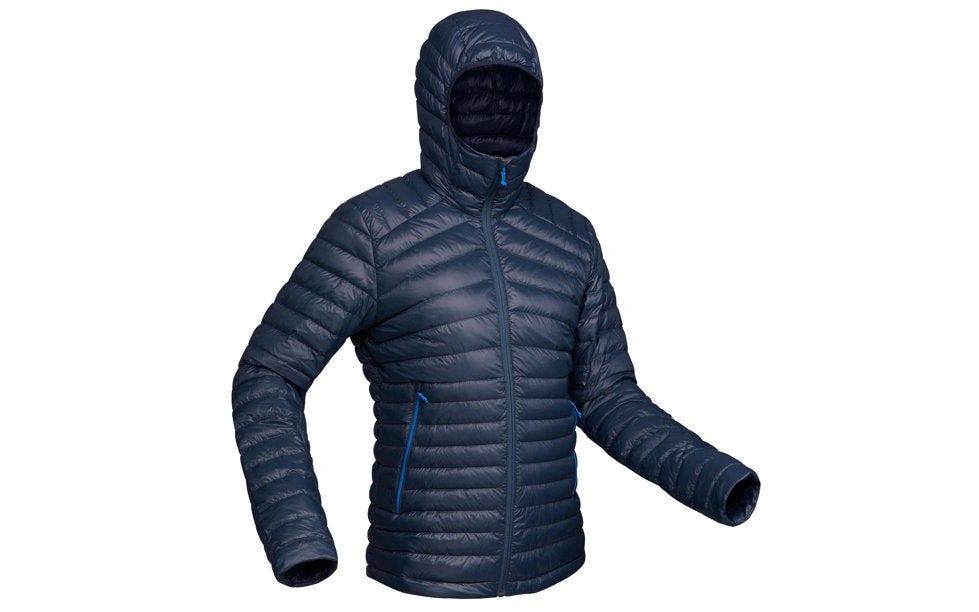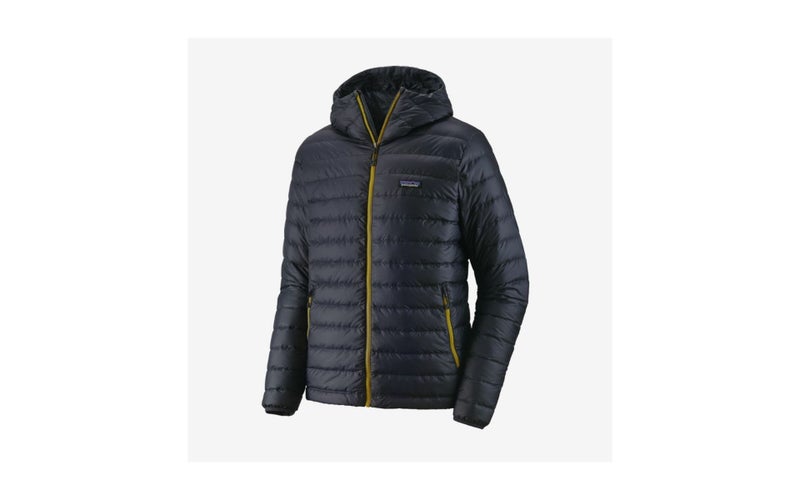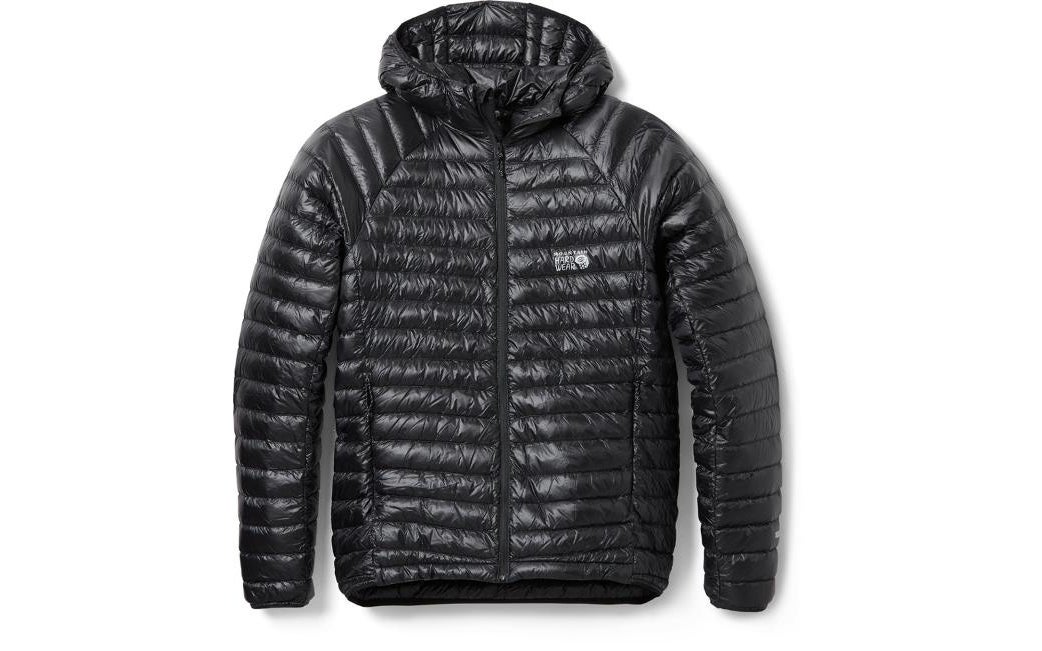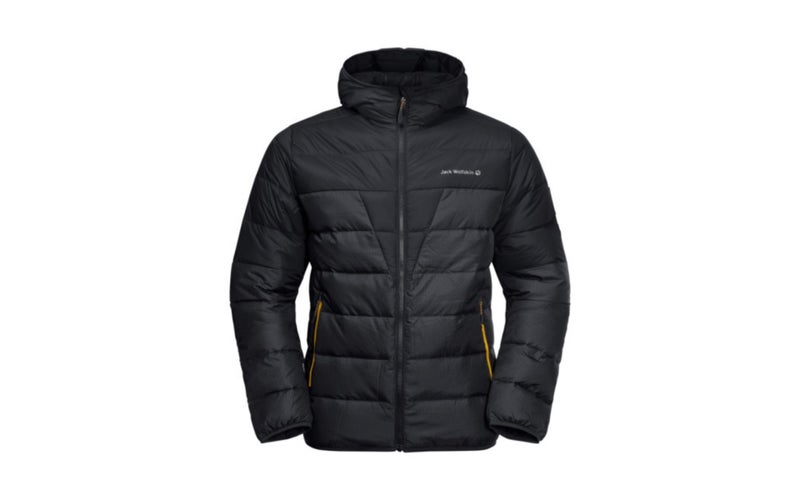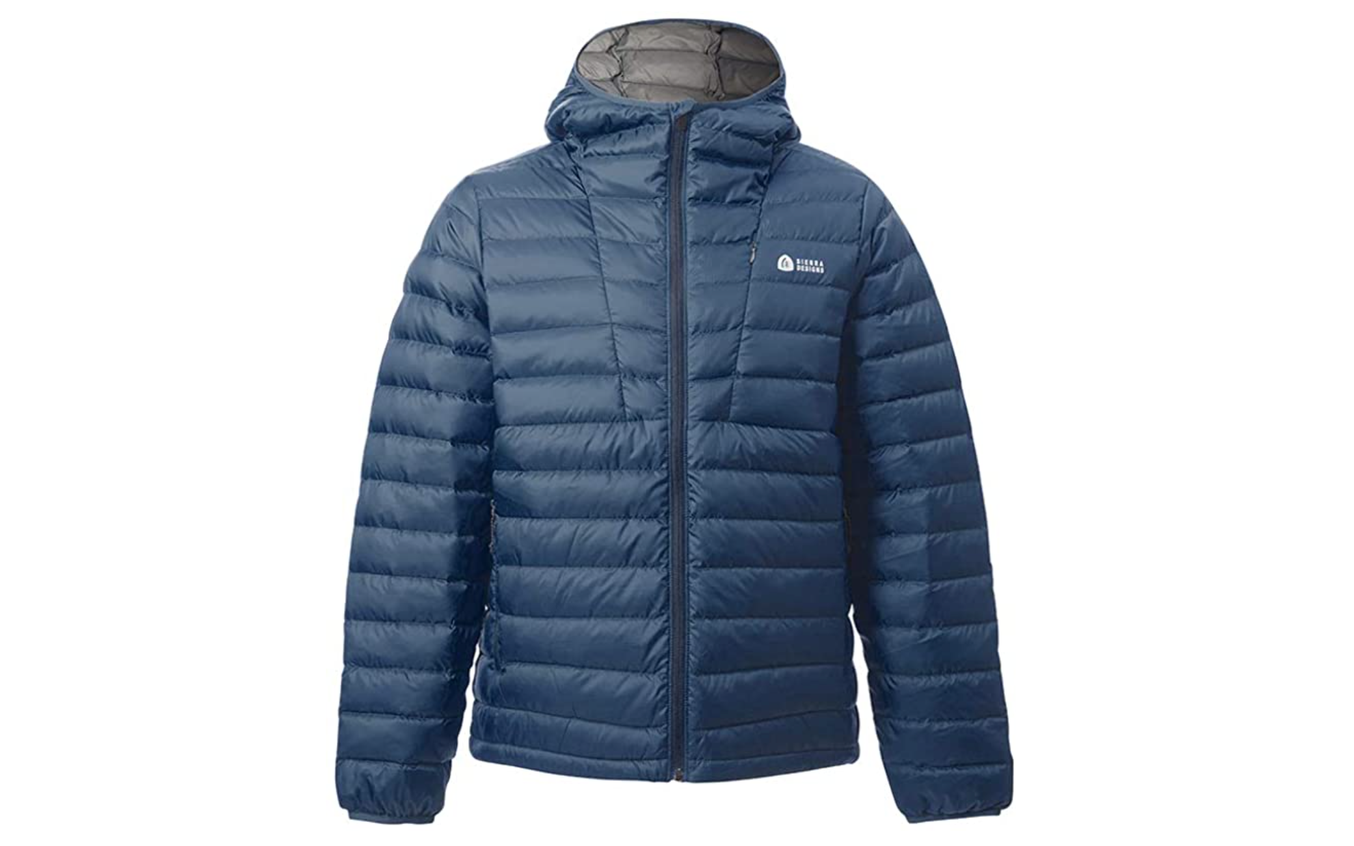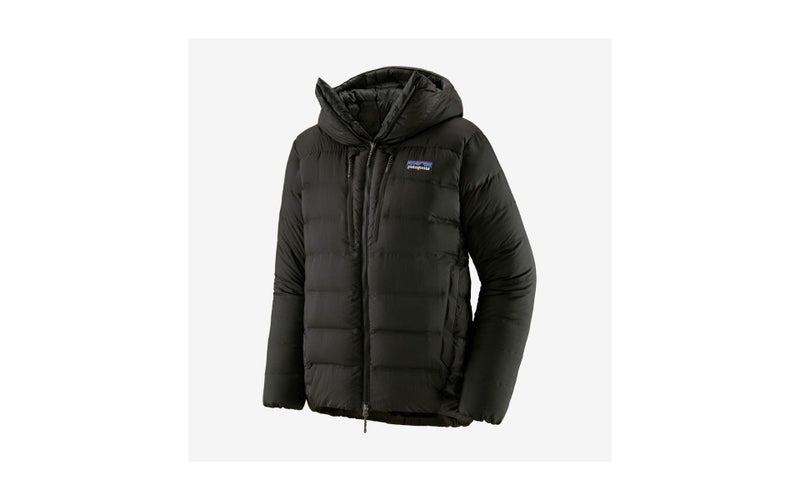We may earn revenue from the products available on this page and participate in affiliate programs.
Whenever I head out into the backcountry, I dress in layers and bring a down jacket with me — every time, even in the summer. “Why?” you might ask. If you’ve spent any time in the military, you probably heard the old saying that cold kills. Well, that’s only half of it.
The truth is that it’s cold, plus moisture will set you speeding down the icy luge run to the great hereafter. When you expend energy while moving, your body creates heat. If that heat can’t escape, it builds up moisture in your clothing. When you stop moving, you stop generating heat, and that built-up moisture transfers the cold directly to your skin.
With that said, it’s important to get smart about layering and also selecting appropriate insulating layers so you can regulate both your body temperature and the moisture within your clothing. I generally start with a thin base layer like a Patagonia Capilene Cool lightweight shirt, add an R1 Air Full-Zip hoody for when I’m moving, and keep a down parka at the top of my pack to wear at breaks to stay warm.
Down, which comes from pumules from ducks and geese, is nature’s best insulator. Down offers the most warmth for the least weight and bulk. It’s super warm, light, and compressible. I’ve taken a look at the best down jackets to help you decide which is the best jacket that meets your needs.
After reviewing myriad down jackets, the Montbell Plasma 1000 Alpine Down Parka emerged as the top pick for 2021. Montbell combined some of the world’s thinnest nylon and lightest down to create an ultra-lightweight masterpiece for those looking to get the warmest jacket at the lightest weight — a sure pick for alpine mountaineers, backcountry skiers, and long-distance backpackers.
Weighing in at a scant 8.4 ounces, the Plasma 1000 Alpine Down Parka is one of the very lightest on the market. The jacket’s shell is made from 7D Ballistic Airlight nylon ripstop with a water-repellant finish and uses a proprietary sewing pattern to minimize heat loss and reduce seam weight. The jacket is exceptionally compressible and reduces to 5.3 by 7.6 inches. The helmet-compatible hood features two-way adjustability and the hem is also adjustable. The jacket sports elasticized cuffs and two hand-warming pockets.
If you’re looking for a warm, artfully crafted, and exceptionally light down parka for cold weather activities like climbing, skiing, or backpacking, the Plasma 1000 Alpine Down Parka is hard to beat.
- Fill: 1000 fill power down
- Weight: 8.4 oz
- Shell material: 7D ripstop nylon
- Waterproof: Resistant, DWR finish
- Windproof: Highly wind-resistant
- Adjustable hood: Yes, two-way
- Chest pocket: No
- Interior stash pockets: No
- Adjustable hem: Yes
Very warm
Extremely compressible
Superior quality and design
Two-way adjustable hood
Expensive
Not the most durable, requires special care
Lacks interior dump pockets
We were shocked to find a decent entry-level down parka for around $80, and that jacket is the Decathlon Forclaz Trek 100. So what do you get from this French company’s budget down jacket? A fairly lightweight, packable, wind- and water-resistant jacket that stuffs into its own left-hand pocket. The jacket sports quality YKK zippers and elasticized cuffs. The main fabric is 15D 100 percent polyamide with 90 percent grey duck-down fill, and it’s stitched together well. We didn’t like that the hood isn’t adjustable, and the jacket lacks interior dump pockets and also lacks a chest pocket.
For an 800 power-down filled jacket weighing 10.2 ounces, you just can’t beat the price. It doesn’t have all the features we like, but it doesn’t break the bank either. For most people just getting into camping and backpacking, this will work just fine.
- Fill: 800 fill power down (94g)
- Weight: 10.2 oz
- Shell material: 100% polyamide
- Waterproof: Resistant, DWR coating
- Windproof: Resistant
- Adjustable hood: No
- Chest pocket: No
- Interior stash pockets: No
- Adjustable hem: Yes
Budget-friendly
Lightweight
Good quality
Runs small
Lacks interior pockets
Hood doesn’t adjust
It’s no secret that I’ve been a fan of Patagonia’s outdoor gear for decades. Their gear is always well-built, thoughtfully designed, and backed by a no-shit lifetime warranty. When I needed a new midweight down jacket for climbing Mount Rainier last summer, this is what I bought. Simply designed, the Down Sweater Hoody has everything you need — warmth, functionality, and compressibility — and nothing you don’t.
Cut for an athletic frame, this jacket allows the wearer great freedom of movement (doesn’t ride up when you raise your arms overhead). The fully adjustable and climbing helmet-compatible hood allows for good visibility while keeping your head warm. The elastic cuffs, conchable hood, adjustable hem, and zipper baffle ensure warmth stays in and cold stays out. Patagonia also pays attention to the little details like putting microfleece at the point where the jacket material meets your chin when fully zipped for additional comfort.
When you need one down jacket that can be used for multiple applications, the Patagonia Down Sweater Hoody is a sure bet. It’s exceptionally versatile, made from quality materials, and backed by Patagonia’s lifetime guarantee. It’s a solid choice for climbing, alpine mountaineering, backpacking, skiing, and chilling après-ski.
- Fill: 800 fill power down
- Weight: 15.1 oz
- Shell material: 20x30D ripstop polyester
- Waterproof: Resistant, DWR coating
- Windproof: Yes
- Adjustable hood: Yes
- Chest pocket: One interior with carabiner loop
- Interior stash pockets: No
- Adjustable hem: Yes
Very warm
Packable, compressible
Thoughtfully designed
No hydrophobic down
Lacks interior dump pockets
When every gram counts and you’re looking to minimize the space a jacket takes in your pack, there’s no beating the Mountain Hardwear Ghost Whisperer UL. We had to look twice when we read the specs that this jacket weighed in at a scant 6.7 ounces. Mountain Hardwear achieved this by using 1,000 power down filling and 5x7D ripstop nylon.
While it’s light, the shell is also thin, so you’ll want to take extra care when wearing this jacket and avoid snags and sparks from any campfires. We’ve also read some complaints about the long-term durability of the jacket. While we liked the minimal weight of the jacket, we felt it was missing some key features like interior stash pockets, chest pockets, and an adjustable hood. The hood also wasn’t super helmet-compatible.
Otherwise, the shell is DWR finished so it will repel some water and give some protection from the wind. The jacket is highly packable and stuffs into its own hand pocket, which also has a carabiner loop. We noted that the pocket zipper isn’t a two-sided reversible zipper, which makes closing the stuff sack a challenge. The cuffs are elasticized, but the jacket also is lacking an adjustable hem to keep the wind out.
If you are the type who cuts the handle off of your toothbrush to save grams in your backpack, then this is the jacket for you. Hands down, it’s the lightest we’ve seen.
- Fill: 1000 fill power down
- Weight: 6.67 oz
- Shell material: 5 x 7D ripstop nylon
- Waterproof: Resistant, DWR coating
- Windproof: Resistant
- Adjustable hood: No
- Chest pocket: No
- Interior stash pockets: No
- Adjustable hem: No
Super lightweight
Extremely packable
High warmth to weight ratio
Comfortable fit
Expensive
Not super durable
Hood isn’t adjustable and kinda snug when wearing a helmet
The brand Jack Wolfskin has been around Europe for decades, and they’re just recently introducing their line of outdoor clothing to US markets. Being unfamiliar with the brand, I really didn’t know quite what to expect when I received their DNA Tundra Hoody. I have to say I was pleasantly surprised.
While it wasn’t the lightest or most compressible jacket I reviewed, at $199.99, this jacket is worth a look. First off, the jacket is fairly warm for a lightweight down coat, and built out of quality materials to include YKK zippers with extended pull tabs for use with gloves. You can stuff the jacket into either of the two hand pockets, but the pocket zippers lack double-sided zipper pulls to facilitate zipping the stuffed pocket closed (I hope version 2.0 gets this upgrade).
I tested the jacket in some pretty breezy and cold conditions (23-degrees Fahrenheit and 15 mph wind) and it cut the wind and kept me warm. The jacket hood will (barely) fit over a climbing helmet, but movement is restricted with the jacket zipped, and the hood is not adjustable. The hem also lacks a drawcord to keep the wind out.
The DNA Tundra hoody is a good entry-level down jacket that’s affordably priced. This isn’t the jacket for climbers and alpinists, but it will take care of you if you are camping, hiking or backpacking or just want a warm, lightweight jacket for kicking around town.
- Fill: 700 fill power down
- Weight: 14.4 oz
- Shell material: 96% polyamide, 4% polyester
- Waterproof: Resistant
- Windproof: 100% windproof
- Adjustable hood: No
- Chest pocket: No
- Interior stash pockets: Four interior dump pockets
- Adjustable hem: No
Inexpensive
Warm
Windproof
Lacks adjustable hood
Lacks chest pocket
Lacks adjustable hem
Named after the highest peak in the lower 48 states, Mount Whitney, the Sierra Designs Whitney hoodie is designed to meet all the cold weather challenges of its namesake. I’ve owned Sierra Designs tents and sleeping bags over the years and was really impressed with the attention to detail put into this 800-fill hydrophobic DriDown jacket that keeps you warm and toasty when the temps plummet.
This mid-grade jacket has many of the features of premium-grade down jackets at half the price. The Whitney hoody has two zippered hand pockets, and an external zippered chest pocket. Light and packable, the entire jacket stuffs down into the left hand pocket into a mass about the size of a grapefruit. The left hand pocket has a double sided zipper that enables you to easily close and open the zipper while the jacket is stuffed, an oversight on many down jackets. The overstuffed helmet compatible hood and high collar help keep cold winds at bay. I do wish the hood was adjustable. It’s a bit voluminous when not wearing a helmet. The jacket’s hem has an adjustable bungee drawstring with cord lock. Unique to the jackets I reviewed, the sleeves have an elastic gaiter a few inches up from the cuff on the inside of the sleeve to help limit heat loss, which is a thoughtful detail.
The more I wear this jacket, the more I like it — and at around $160, it’s a deal.
- Fill: 800 fill power down (hydrophobic)
- Weight: 14 oz
- Shell material: 30D Shadow Rip Polyester
- Waterproof: Resistant
- Windproof: Very resistant
- Adjustable hood: No
- Chest pocket: Yes
- Interior stash pockets: Two interior dump pockets
- Adjustable hem: Yes
Very warm
Wind resistant
Very comfortable
Affordable
Lacks adjustable hood
Jacket rides up a bit when wearing helmet and moving arms overhead
If you are going to Everest or Antarctica, this is the down jacket for you. For the premium price tag, it’s better to think of this coat as a key piece of survival gear and not a jacket. In terms of engineering, construction, and fit, the Grade VII Parka is one of the most technical garments Patagonia has ever designed. Famed mountaineer Steve House advised Patagonia on the development of the jacket.
The Grade VII Parka is completely baffled and filled with 800 fill power down to ensure maximum loft and minimal shifting or settling. Instead of stitching the baffles, Patagonia glued them to eliminate needle holes (points of cold air and water entry). The fully-baffled adjustable hood, once donned, will increase the apparent size of your head by a factor of two and is ridiculously warm.
The handwarmer pockets are baffled and are designed with a stiffened edge to ease entry with gloved hands, and the front zipper has double draft tubes to minimize air passage through the zipper and seal in warm air. The jacket has two exterior chest pockets, and four large dump pockets (two on each side) with mesh bottoms to stow damp socks or water bottles. The side baffles are elasticized to help the wearer see their feet and climbing harness, and the low-cut drop tail bottom hem is adjustable to keep the cold out and your butt warm.
This jacket is overkill for most people. If you are going to climb big, cold mountains or trek across the poles, this is the coat you’ll want. It is very expensive, but, as my climbing mentor once said, “You can buy a $20 piece of gear if you have a $20 life.” This garment is intended to keep you alive in the most extreme conditions on the planet.
- Fill: 800 fill power down
- Weight: 26.2 oz
- Shell material: 100% recycled nylon
- Waterproof: DWR, repellant
- Windproof: Yes
- Adjustable hood: Yes
- Chest pocket: Yes, two
- Interior stash pockets: Four interior dump pockets
- Adjustable hem: Yes
Exceptionally well-designed
Very warm
Windproof
Very, very expensive
Why you should trust us
I have more than 35 years of experience living and working outdoors. I’m an avid long-distance backpacker, rock climber, and mountaineer who understands the value well-designed gear delivers, especially when your life depends on it. I don’t get paid by the manufacturers and have editorial independence. My editor leaves it to me to recommend and prints what I write. All of this enables me to provide you, our valued readers, with our unvarnished, honest opinions on the recommendations we make.
Types of down hackets
There are a bajillion different down jackets on the market, and choosing the right one for you can be a bewildering experience. It’s best to first think about what you’ll use the jacket for before starting your search.
Ultralight down jackets
When you have to carry everything you need on your back for days over many miles, every ounce counts. Ultralight backpacking down jackets seek to provide the most warmth for the fewest ounces carried. These jackets tend to use the fluffiest down (800 to 1,000 fill) and have very thin 5D to 7D shells that aren’t the most durable and require special care when wearing to avoid rips and snags.
They also have fewer features like chest pockets and adjustment points and tend to be the most expensive due to the high-performance materials used. These jackets generally weigh less than 10 ounces overall and have three to four ounces of down fill. They can be used as outer layers in warmer conditions and mid-layers in colder conditions.
Midweight down jackets
When you’re not obsessed with eliminating every possible gram, you get more options in terms of features and warmth. Most midweight down jackets for backpacking use 600 (less fluffy) to 800 (more fluffy) power fill down and have a hood, two hand warmer pockets, a chest pocket or two, and adjustable hoods and hems. These won’t be the absolute lightest jackets, but they’re good tradeoffs in terms of warmth, weight, and features. Midweight jackets generally weigh between 12 and 15 ounces overall, with five to six ounces of down fill.
Heavyweight down jackets
These super warm jackets are designed for cold and windy conditions. They often sport weather-resistant shells, large baffled hoods, and more insulation for true winter conditions. These jackets typically weigh more than 20 ounces overall, with more than eight ounces of down fill, and are designed to keep you warm in the harshest conditions.
Features of down jackets
Down fill power
The first thing you need to know about down jackets is the concept of fill power, which is a measure of the down’s quality and its loft. Fill power is an indicator of how many cubic inches of loft one ounce of down fill produces. For instance, 600 fill power down means one ounce of down would produce 600 cubic inches of loft. The higher the fill power, the better quality, higher loft, and higher firmness the down will have. Higher fill numbers like 800 to 1,000 indicate superior loft and insulating ability. It’s important to note that fill power alone is not an indication of how warm a jacket is. Fill power is an indicator of how warm the down is for its weight.
Down fill weight
Down fill weight indicates how much down by weight is stitched into the baffles of a jacket. Considering that down provides insulative warmth by trapping dead air next to your body, a jacket with four ounces of 800 fill power down will be substantially warmer than one with four ounces of 500 fill power down, and the 800 fill power down jacket will compress into a smaller package than the 500 fill power jacket. Also, a jacket with eight ounces of 800 fill power down will be twice as warm as a jacket with four ounces of 800 fill power down. Make sense?
DWR finish
Good down parkas will have a durable water-repellent finish to prevent precipitation from penetrating the jacket’s interior. This is important because down loses almost all of its ability to insulate if it becomes wet and clumps.
Hoods
A good down parka will have a hood to help keep your head warm. Do you need it? No. Some prefer a jacket and find hoods annoying. I find hoods to be useful, as they can help you better regulate your body temperature and moisture production.
Elasticized or adjustable hoods, wrists, and hems
Down parkas work because they trap dead air next to your body, and snug-fitting wrists, hoods, and hems help keep cold drafts out and warm air in.
Pockets
Minimalist or ultralight down parkas may just have two hand warming pockets or none at all. Midweight and heavyweight jackets tend to have two hand pockets, internal dump or stash pockets, and one or two chest pockets.
Benefits of down jackets
Warmth
Down is nature’s best insulator, and down jackets provide the greatest amount of warmth for the least amount of weight of any material in current use. The warmth of a jacket is the product of both the down’s fill power rating (fluffiness) and its fill weight (how much down is stitched into the jacket).
Lightweight
Ounce for ounce, down provides the best warmth available. Synthetic insulation cannot compete — yet.
Compressibility
Higher fill power down jackets can compress into very small, packable masses and then spring back to full loft when unpacked. Simply put, down parkas take up less room in your pack than their synthetic insulated cousins. When every inch counts, choose down.
Down jacket pricing considerations
Value
Bargain level down jackets range from $79 for the Decathlon Forclaz Trek 100 (800 fill power) to $120 for the REI 650 Down Hoodie 2.0. These jackets are typically used as a lightweight outer garment for three-season applications or as an insulating layer during colder weather.
Mid-range
Most of the jackets we reviewed fell into the $200 to $300 range for light and midweight jackets. Many factors impact the price to include the quality of the down (fill power), features, and materials used in the jackets.
Premium
We consider anything over $300 to be in the premium range of down jackets. This includes the much-loved Mountain Hardwear Ghost Whisperer 2 at $325 to the Patagonia Grade VII Parka at $899.
How we chose our top picks
The parkas recommended in this review were selected based on hands-on inspection, interviewing other experts, and thoroughly reviewing manufacturers’ specifications. We take our time to get to know the strengths and weaknesses of each item, and also check out the reviews of other experts just to make sure we’re not missing anything.
FAQs on down jackets
You’ve got questions, Task & Purpose has answers.
Q. Which down jacket is the warmest?
A. Typically, the ones with the most down by weight and the highest fill power down in them are the warmest.
Q. Is 800 fill power down warmer than 600?
A. Ounce for ounce, 800 fill down is warmer than 600 fill down, provided that the same amount of down by weight is used. Note that fill power is a measure of the down’s quality (loft), but this number alone won’t tell you how warm a jacket is. You’ll also need to take into account how many ounces of down are stitched into the jacket.
Q. Are down jackets good for hiking?
A. Absolutely. Down jackets provide exceptional warmth per ounce and great compressibility.
Our gear section
Joe Plenzler is a Marine Corps veteran who served from 1995 to 2015. He is a backcountry expert, long-distance backpacker, rock climber, kayaker, cyclist, wannabe mountaineer, and the world’s OK-est guitar player. He is currently section-hiking the Appalachian Trail with his partner, Kate Germano. He supports his outdoor addiction by working as a human communication consultant, teaching at the College of Southern Maryland, and helping start-up companies with their public relations and marketing efforts.
